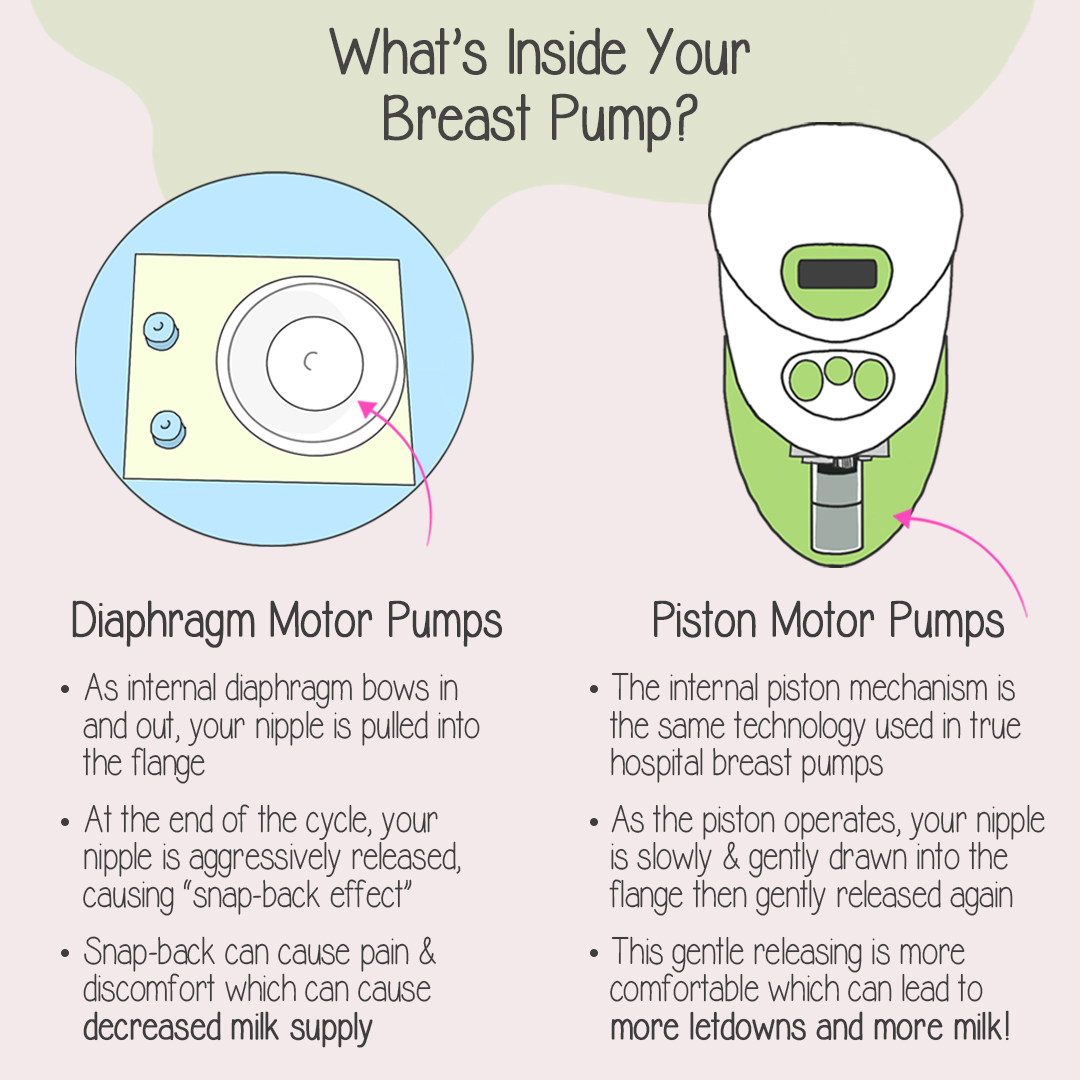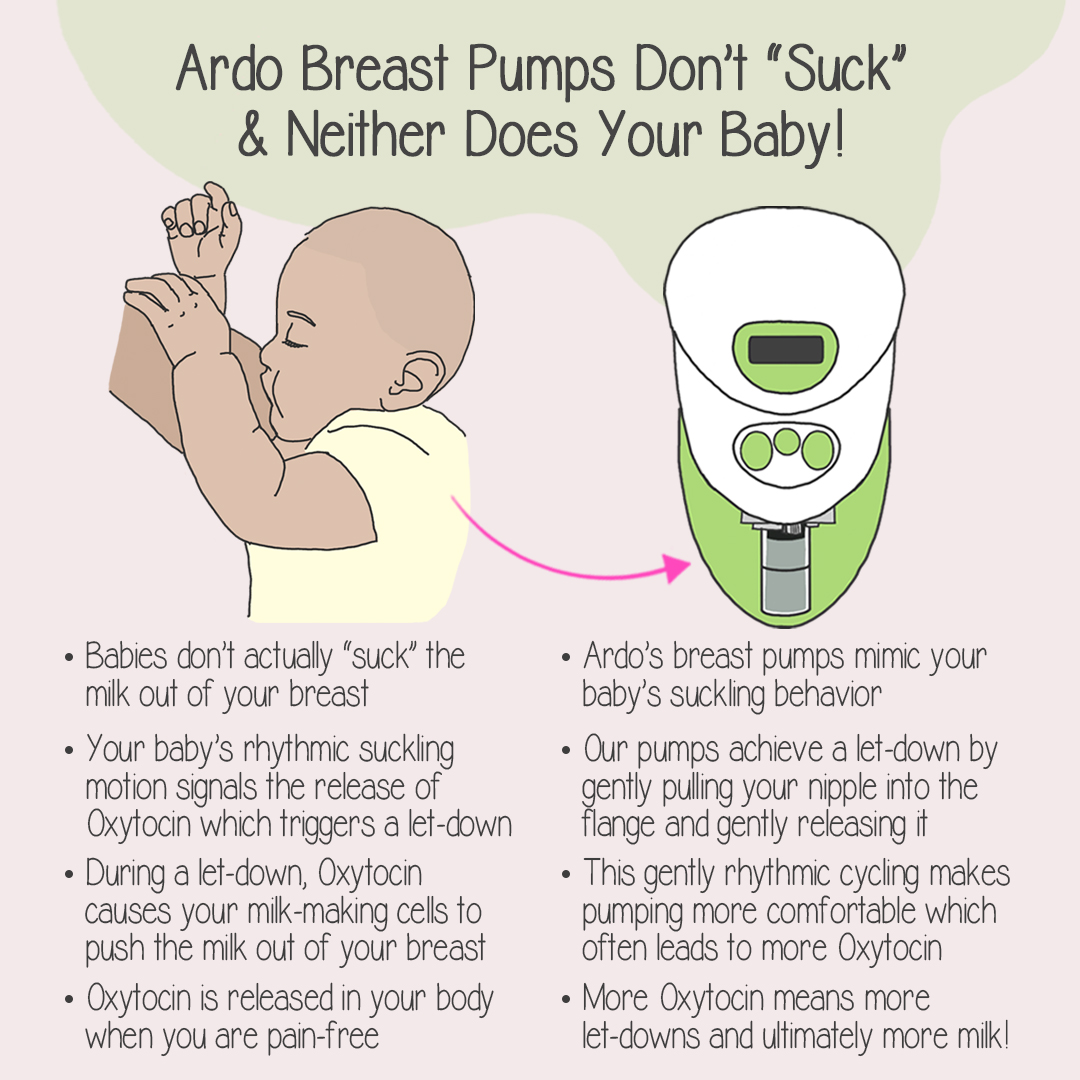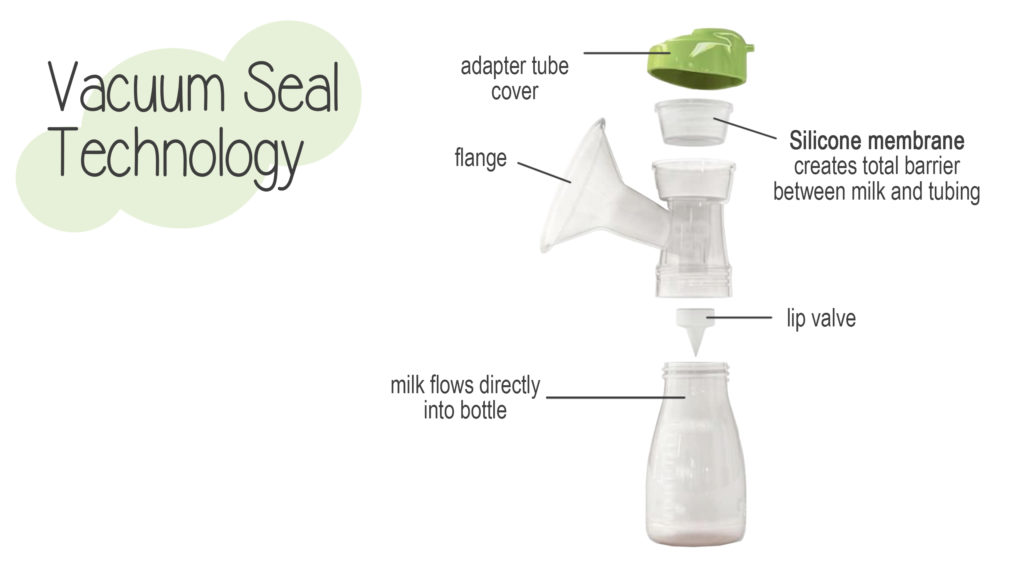How to Pump More Milk with the Ardo Calypso
Not All Breast Pumps Are Created Equal, Ardo Allows You To Pump More Milk
Do you know what is powering your breast pump? Believe it or not, the internal pump mechanism can make a huge difference on the amount of milk you’re able to pump. Breast pumps vary based on mechanics. While all pumps work on the same basic principle to remove breast milk (creating a vacuum to mimic your baby’s suction), not all breast pumps are created equal. There are several styles of internal pump mechanisms that make up the motor of the pump, but the most commonly used mechanisms are:
- Diaphragm technology, often also referred to as the membrane technology
- Cylinder/Piston technology, used primarily in true hospital pumps
Diaphragm: Causes a Snap-Back Effect
Almost all personal pumps are diaphragm pumps which work by utilizing a flexible diaphragm that noisily bows in and out to build up the desired vacuum pressure. Diaphragm pumps are easily recognized by their loud noise, a “ts-ts-ts-ts-…” sound, as the diaphragm mechanism bows outward. As the internal diaphragm bows in and out, your nipple is pulled into the flange, step-by-step (click here to hear a noise comparison). At the end, your nipple is aggressively released as the diaphragm opens up to release the vacuum in a sudden snap (accompanied long hissing noise, something like “tshshshshshsh”). This releasing action of your nipple, termed a “snap-back effect”, may cause pain, discomfort, and anxiety, which in turn can cause your milk flow to decrease or delay. (The milk flow reduction is caused by lowered quantities of the important hormone Oxytocin; but more on that later.)

Cylinder/Piston: Hospital Technology, Made in Switzerland
In contrast, Ardo’s Calypso personal breast pump (and its multi-user cousin Calypso PRO) utilizes a piston/cylinder mechanism, the same technology used in true hospital pumps – not to be confused with so-called “hospital grade” pumps, a misleading term, since those pumps are not fit for hospital use and do not use hospital technology.
Renowned for their low noise, long life, and high reliability, piston pumps draw a piston through a cylinder to create suction. Think of your car – at the heart of a vehicle’s engine are cylinders and inside each cylinder is a piston that slides up and down to power your car. As the piston operates, your nipple is slowly and gently drawn into the flange. Since there is no quick release of pressure, as experienced in a diaphragm pump, your nipple is gently released before the next cycle.
Ardo Breast Pumps Do Not “Suck” and Neither Does Your Baby!
A common misconception is that your baby is supposed to “suck” your milk out. But that is entirely wrong. The purpose of your baby gently “sucking” on your breast is to trigger the milk ejection response, also known as a “let-down”. The “let-down” reflex, in which your milk-making cells push the milk out through your nipple, is triggered through a complex mechanism in your body. Essentially, this happens because of the hormone Oxytocin, which is released when you are comfortable and pain-free. Your baby’s gentle nipple sucking simply facilitates the release of Oxytocin, so the milk begins to flow freely.
Breast pumps achieve this milk ejection response by repeatedly pulling your nipple into the flange, then releasing it, creating a suction-release cycle. However, when your nipple is pulled into the flange too deeply and released too quickly and aggressively, commonly experienced with a diaphragm pump, your milk ejection response can be inhibited. Pain and other stressors are known to prevent the milk ejection response, which may ultimately decrease your milk supply.

Ardo’s cylinder/piston Swiss Made Hospital Technology actually mimics your baby’s gentle sucking behavior. If you ever watch a nursing baby, you will see that they never unlatch to swallow – they stay connected to the nipple, drawing it into their mouth every time they suck and slowly releasing it before sucking again. Ardo’s Calypso draws your nipple into and releases it out of the flange at the same rate of speed, granting appropriate nipple conduction, making pumping more comfortable. More comfort often means higher levels of Oxytocin, which ultimately leads to increased milk ejection reflexes. When you have a pump that mimics your baby’s true suck, you will ultimately be able to pump more milk.
“Vacuum Seal” Technology
Mothers have reported that they can pump more milk with the Ardo Calypso, and they pump with confidence knowing that their pump is based on a completely closed system. The silicone membrane pot integrated into the Pumpset is at the heart of our “Vacuum Seal” Technology.

This technology ensures that there is a total barrier between the breast milk and any pathogenic agents. “Vacuum Seal” guarantees protection of the breast, breast milk, and the pump against contamination. Components such as the silicone tubing do not have to be boiled/sterilized before use. In addition, no milk will ever get in the tubing of your breast pump.
Pump More Milk with the Quietest Breast Pump
Noise tests show that Calypso is the quietest breast pump!
The Calypso is the quietest of all tested electric breast pumps. In comparison with many other commercially available pumps, it is only perceived to be half as loud, but it is still powerful.
See for yourself how quiet the Calypso is compared to the other pumps tested.
Still undecided about getting your new Ardo Calypso breast pump? Read what our moms have to say about our ultra-silent, ultra-portable breast pump! Click on the link below.
